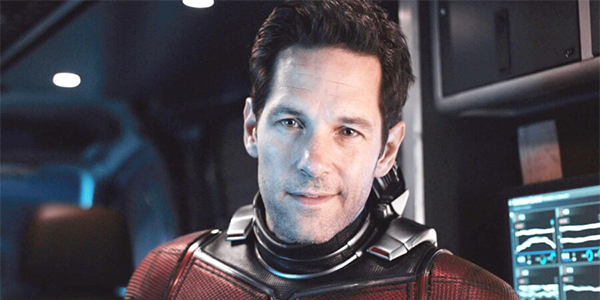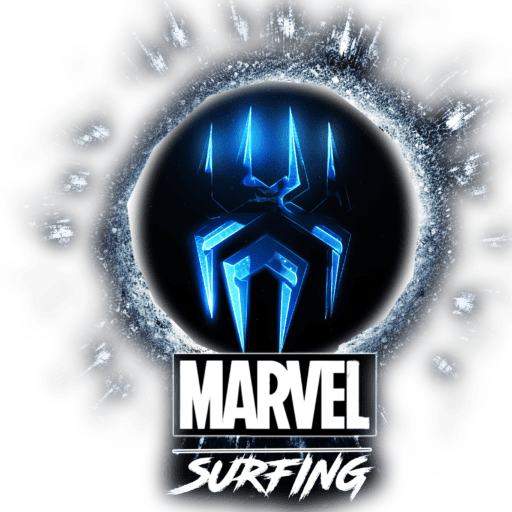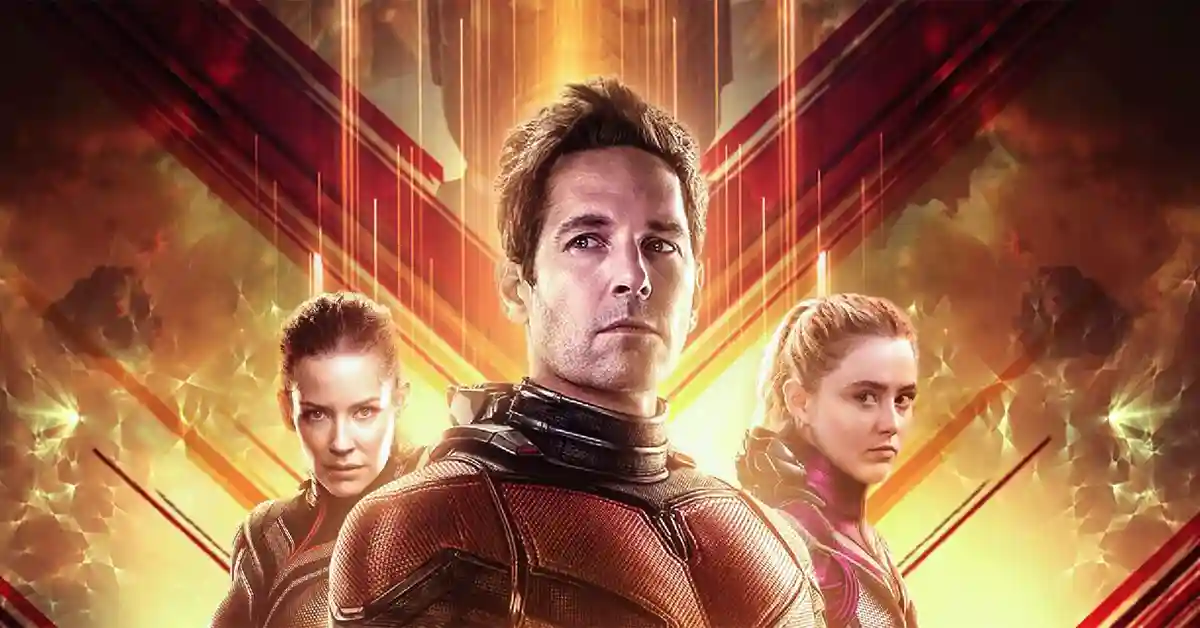Dive into the mind-bending world of Ant-Man and the Wasp: Quantumania! Uncover secrets that will leave you awestruck. Get ready for an adventure like never before
Scott Lang, Hope Van Dyne, Hank Pym, and Janet Van Dyne go on an adventure in the Quantum Realm that defies all expectations.
The upcoming movie Ant-Man and the Wasp: Quantumania is based on the Marvel Comics characters of the same name. It’s the follow-up to Ant-Man, Ant-Man and the Wasp, Avengers: Endgame, and Loki: The First Season. It kicks off Marvel’s Phase Five with the 31st MCU film overall. The scheduled release date for the movie is February 17, 2023.
In the film, Paul Rudd plays Scott Lang/Ant-Man, Evangeline Lilly plays Hope van Dyne/Wasp, Jonathan Majors plays Nathaniel Richards/Kang the Conqueror, Kathryn Newton plays Cassie Lang/Stature, David Dastmalchian plays Veb, William Jackson Harper plays Quaz, Katy M. O’Brian plays Jentorra, and Bill Murray plays Lord Krylar.
Scott Lang and Hope van Dyne, or Ant-Man and The Wasp, are back in Ant-Man and The Wasp: Quantumania to continue their Super Hero partnership. Scott and his daughter Cassie Lang, together with Hope’s parents Hank Pym and Janet van Dyne, go on an excursion into the Quantum Realm that will test the limits of the Lang family in ways they never imagined.
QUANTUMANIA: PAUL RUDD, JONATHAN MAJORS, AND CAST DISCUSS PHASE 5 AND KANG THE CONQUEROR

Peyton Reed discusses the Quantum Realm’s design influences.
Scott Lang (Paul Rudd) and Hope Van Dyne (Evangeline Lilly), together with Hope’s parents Hank Pym (Michael Douglas) and Janet Van Dyne (Michelle Pfeiffer), and Scott’s daughter Cassie (Elle Fanning), return in the newest Marvel Cinematic Universe film, Ant-Man and the Wasp: Quantumania (Kathryn Newton). Kang the Conqueror (Jonathan Majors), a complex and mysterious enemy with tremendous power, is encountered as they travel deeper into the Quantum Realm and come into contact with weird new animals.
At the press conference for the third installment of the Ant-Man film series, stars Paul Rudd, Evangeline Lilly, Thandie Newton, and Henry “Hank” Majors spoke with director Peyton Reed and Marvel Studios president Kevin Feige about the characters’ development over the course of the series, Scott Lang’s perspective on being a superhero, the film’s exploration of the Quantum Realm and the creation of its wild visual style, Kang the Conqueror’s role in the story, the relationship between.
Question: Peyton, as Ant-Man director, you’ve shaped these superheroes and their experiences from the start. How does Quantumania continue the signature of these movies while boosting Ant-Man and the Wasp?

The Ant-Man films, according to PEYTON REED, have always been about family. Scott Lang, who is neither a billionaire nor a super-scientist, is drawn into this world by Hope van Dyne, the heir apparent daughter of Michael Douglas and Michelle Pfeiffer’s titular heroes. It’s a generational phenomenon, and now young Cassie Lang is arguably Scott’s greatest motivating element of, spending time with his daughter. Obviously, he has heroic aspirations. His superhero identity is that of an Avenger. The actual issue, though, is how to strike a balance between his business and personal life so that he may spend more time with his daughter. That’s the utmost significance. Despite the fact that Cassie Lang is now 18 years old in this film, their tale continues. In Quantumania, we’ve expanded the scope of the story to include the secrets that family members hide from one another. Very early on in the film, we learn that perhaps Janet has not told her family about her thirty years in the Quantum Realm, that perhaps Hope and Hank have not told Scott about their basement experiments with Cassie, and that perhaps Cassie has not told her father about any time she may have spent in jail. At the start of the film, everyone except Scott is hiding something from him. And now they find themselves in the bizarre and wacky Quantum Realm, where they must figure out how to get along as a family. However, the most consistent topic in cinema is that of family.
Since Ant-2015 Man’s debut, Paul, how has Scott’s superhero identity changed?
In the words of PAUL RUDD: His primary concern is with fatherhood. Although he had always had mixed feelings about it, I get the impression that he has now come to terms with it. Now that it seems to be behind them, he is enjoying the opportunity to settle into a routine and spend time with her. Naturally, that doesn’t last as long as he might have hoped. In the nine years or so that we’ve been doing movies together, though, I believe he’s matured quite a bit. To begin with, he was just a person with a regular job. He was recruited for the team despite lacking any inherent superpowers, and after facing Thanos in battle, he learned to embrace his limitations and fit in with the rest of the team. This film begins in the present day. Everything that happens in Endgame actually happened. Others may see it as a victory lap, but I don’t. And his autobiography, Look Out for the Little Guy, has just been published. He’s shared his life story and his time with the Avengers, and now he just wants to be a regular dad for a while. There are problems since we missed out on so much, and I’d like to relive some of those years. Now that Cassie is older and has her own opinions, we’re trying to figure out how to accommodate her.
Evangeline, how has Hope van Dyne changed? As Quantumania begins, what’s she doing?
Hope was introduced in the first Ant-Man film by EVANGELINE LILLY as a chilly, unfeeling, and lonely woman. There weren’t many people she was close to in her life. Many of her romances ended in failure. And throughout the course of these three films, I’ve got this amazing arc to play, where she has, in that time, reconciled with her estranged father, found her long-lost mother, fallen madly in love with Scott, and become a stepmom to Cassie. Her life is replete with loving connections to others. What she’s doing now in the world is a direct reflection of the lady she was when we met her. She is flourishing, and she is spreading that love by working to address world-changing problems like climate change and the housing shortage. Moreover, there is this minor setback. There’s this one detail: all her life, she’s dreamed of the day her mother will return home. This idealisation dates back to when she was eight years old; she told herself that she and she would become inseparable, that she would tell her everything, and that they would become extremely close. Hope is kept on the outside, like a festering wound, and she does a poor job of tending to it at the start of the film.
For more information Click Here
Kevin, the Quantum Realm dominates this film. What is the Quantum Realm, where have we seen it, and what does Quantumania reveal?
As KEVIN FEIGE puts it: The first Ant-Man movie was the first to feature this. Recently, I was reminded of Paul’s early concept, before making the first Ant-Man picture, to investigate this and quantum mechanics; if you’re interested, I’d be happy to elaborate on this further today. Paul was describing how much room there is for creative play at the quantum level, where everything behaves quite differently. Although the original Ant-Man film focused mostly on character introduction and backstory, a small teaser of what was to come in the sequel, Endgame, was included in the film’s closing moments. It’s a location on the subatomic level, where space and time behave differently. As Scott Lang suggested in Endgame, we were able to time travel, and the film’s overall manic quantum-ness—in which we visit a place where only Janet had ever been before and didn’t talk about it much—was made possible by this. There’s a whole other world below ground, teeming with eccentric, entertaining people.
The Quantum Realm looks and feels incredible. Why that look?
FEIGE: We have been working on this for almost three and a half years to bring our viewers to a whole new world. There was much discussion of how meeting and introducing a family to the underworld may be likened to the events in The Wizard of Oz. The aesthetics, on the other hand, were created solely by Peyton and his team after a great deal of time and effort.
PEYTON REED: We wanted to incorporate everything from electron microscope photos to heavy metal magazines from the ’70s and ’80s. There’s some aspect of swords and spells. This has some fascinating Mobius characteristics. What we really wanted to do was put together a group of talented artists to make the Quantum World. As such, we felt it was important to establish a fully realised world with its own history and logic, something that hasn’t been done in any of the previous Marvel films. What kind of animals live there? What kind of folks live there? The means by which you go. Where can I get the physical laws? Everything has to be worked out. Our production designer, Will Htay, helped us put together a crack team of visual artists. We encouraged people to “bring some of their most great ideas to the table and let’s find out what it can be.” We aimed to have some lighthearted fun while taking well-known characters on an adventure across unfamiliar territory. The fact that we had complete creative control over this section of the MCU was thrilling.
What sci-fi movies or TV series influenced the look?
REED: We took inspiration from a wide variety of sources while creating the Quantum Realm, including classics like Flash Gordon and Barbarella as well as more outlandish sources. We inspected the front covers of vintage science fiction paperbacks published in the 1960s, 1970s, and 1980s. Since these publications would be displayed on a newsstand, their covers, painted by some of today’s most talented painters, needed to attract readers’ attention immediately. Many of them were imagining outlandish universes that, if you happened to be browsing paperbacks, you may be drawn into. You might not understand the plot, but you got the picture. I thus studied the works of several of those creators. In addition to American and European musicians, Heavy Metal featured musicians from all around the world. They banded together, and the sum of their work contained some startling visuals. Finally, we explored electron microphotography and real-world microphotography, the latter of which captures details so minute that they resemble topography when printed at large sizes. Everybody’s thoughts immediately went to the possibility that this entire film was taking place under a fingernail. Everything is happening in the Quantum Realm, a realm outside of space and time.
The author, Janet van Dyne, uses the phrase “worlds inside worlds” to describe it at one point. The concept holds that life exists on an endless number of worlds below us. In other words, it involved thinking about all of that and assembling a team of artists, each of whom had their own unique brand of wackiness to offer. A lot of people were impressed by the design and said things like, “Wow, that’s quite neat. Is there a way we might incorporate this into the quantum world? We sought to create an experience that felt as densely packed as a Quantum jungle, but was nevertheless incredibly open and expansive. All combined, it has a different vibe. These strange mines are extracting an unknown energy source that Kang and his forces are putting to use. We drew inspiration from several sources since we wanted to create an environment with as much depth as possible. We had no preconceived notions of its eventual form at the beginning. When we first started visiting Marvel, I remember thinking, “Wow, these are fantastic mockups.” This is the wildest scenery imaginable. No, that’s an electron microscope, they said. That seems to be the case. This is not much of a decoration. The design is completely insane. When things are shown in extreme detail, we’ve all seen something similar.
Jonathan, what are variations and Kang the Conqueror?

MAJORS: Kang—who? We’ll be answering that question forever. Kang is a time-traveling supervillain and nexus being, which explains varieties. Kang has variations. Different realities, multi-verses, and intentions. They’re all distinct, but the Kang gene, which we’re still working on, connects them. Kang the Conqueror is unhappy in the Quantum Realm due to variation concerns. Janet met him there. Jonathan, what are variations and Kang the Conqueror?
How do you play him as an actor?
When you have Shakespeare in the room with other guys and he has a very clear vision of what he wants to do, it’s a lot like being a member of a Shakespearean troupe back in the day, and that’s how the Majors feel about it. Then there’s the leading man or woman, who determines the pace and mood of the entire production. The play’s and story’s culture is there, but it’s also shifting, so it’s important to have a firm grasp on your goals and have a firm understanding of who your character’s backbone is and what he or she is after. You put in the work, and then you have fun. That’s how I interpreted it, anyway. If the game is going left and you’re the only one going right, you turn the other way. It’s a Kang must to get a Kang. That is how we intend to go. It’s the same as the parts of other characters I get to play. Kang simply comes from an alternate reality.
Kathryn, Before you were cast as Cassie, did you ever want to be a superhero?
KATHRYN: I saw my first Marvel film, Iron Man, when I was about eight years old. It was then that I decided I needed to be a Marvel hero. For those who remember me from high school, that was probably my highest praise in the yearbook. I wanted to be a part of it so much because it inspired me to fantasise. As a kid, all I wanted to do was go to the movies with my dad and pretend to be a superhero. I always thought it was hilarious that Cassie Lang can grow to be 40 feet tall, considering that one of my life goals was to become the greatest Marvel superhero of all time. The fact that my own wishes came true should serve as encouragement to you.
Why did ANT-MAN need to be the first Avenger to fight Kang?
FEIGE: It’s the idea of the regular guy going up against the seemingly unbeatable; it’s the person who’s evolved and shocked himself and others over and over again. Another thing I admire about Scott is his resilience. In the very first film of the series, you seem to have forgotten that Scott takes a blow to the face. I really enjoyed how all of it led up to the epic showdown between them in the film.
For more latest updates visit marvelsurfing.com


